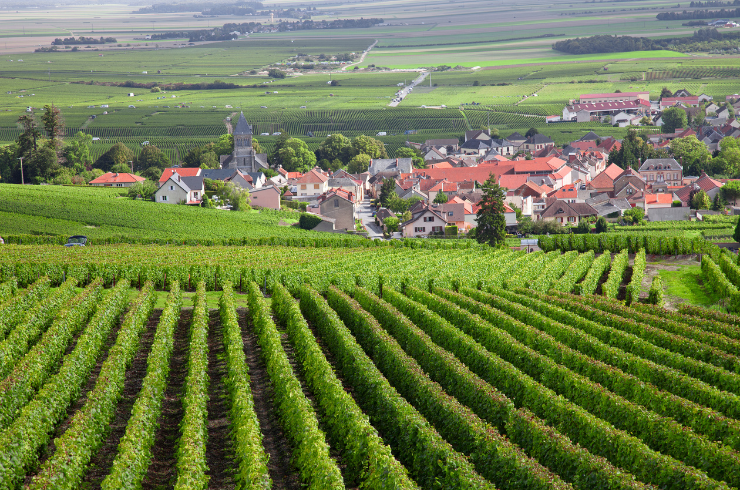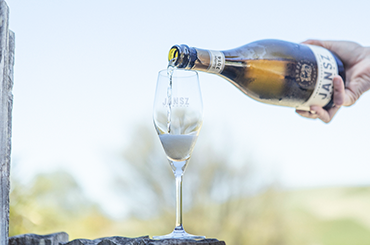“There’s this misunderstanding of ‘you can’t do that in Tasmania’,” Jonny says. Everyone knows that the state turns out world-class pinot noir and chardonnay, but “when you plant shiraz, there’s still a fair bit of convincing to do.”
It’s a sentiment shared by Domaine Simha’s Nav Singh, who released his first Tassie syrah in 2022. “I think syrah has an amazing future here,” Nav says. Sure, it’s cold, but plenty of sunshine hours make for a mid-alcohol syrah with spice, aromatics and white pepper notes. “It’s not heavier or richer than a pinot, it’s just the flavour and the tannins that are different.”
While Tasmanian syrah production has increased in recent years, quantities are still small. Nav has only one block to draw from, all of which ends up in just one or two barrels. “You get the fruit you get,” Nav says. “The pressure is really on.”

Quiet Mutiny, Venus Rising Syrah — Derwent Valley
"We’re lucky to get this beautiful flavour at a lower alcohol,” says Quiet Mutiny’sGreer Carland. “On the mainland, you have to get to 15–16% [abv] to get the same ripeness.” Greer, also winemaker at Laurel Bank, released her first Quiet Mutiny syrah in 2019. Only one tonne of fruit was available in 2021, so supplies of her bright, jubey red are limited. “I’m a bit worried that I won’t be able to keep it in stock,” she says. “It’s selling like hotcakes!” Those looking for a by-the-glass option (and maybe an island holiday) should drop by Hobart restaurants Peacock and Jones, Pearl + Co or Stock Market.
Domaine Simha, Ravi Syrah — Derwent Valley
Nav Singh makes Simha wines at (and sources fruit from) Meadowbank, in the upper Derwent. His shiraz comes from a single vineyard and being based on-site allows ultimate control. Harvest is set according to the lunar rhythm and fruit is 100 per cent whole bunch pressed, for an aromatic lift. If that sounds a bit woo woo, it’s not. “I worked in Burgundy for five years, and that’s how we did it,” Nav says. Expect this newcomer to age gracefully. “It’ll be exciting to see how this wine changes and takes its own story.”
Devil’s Corner Mt Dove Pinot Syrah — East Coast
In 2020, winemaker Tom Wallace grafted shiraz onto the Hazards Vineyard (over the road from the mega-brand’s recently refurbished cellar door) with a Devil’s Corner syrah in mind. “We have a couple of very strong parcels in the winery from 2022,” Tom says, but it’s too early to tell what’ll happen to them. Until now, he’s been using harvest-worthy fruit in a pinot syrah blend, which sits at 70/30 in the 2020 vintage. At $65 a bottle, the Mt Dove, along with its 100 per cent pinot sibling Mt Amos, is the winery’s most premium offering.
Hughes & Hughes, Syrah — Coal River & Derwent Valleys
"It’s not gonna get harder to ripen shiraz, which was part of the reason we decided to plant it,” says Jonny Hughes. Although you won’t find a Mewstone shiraz in bottle shops this year. The yield was so low it’s reserved for mailing list only. Instead, jump on the Hughes & Hughes syrah — it’s spicy, elegant and an absolutely bargain at $37. It’s a natural wine, but not in the 'funky' sense. Think wild yeast fermentation, 21 days on skins, 20 per cent new oak and bottled unfiltered.





